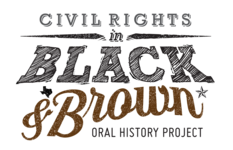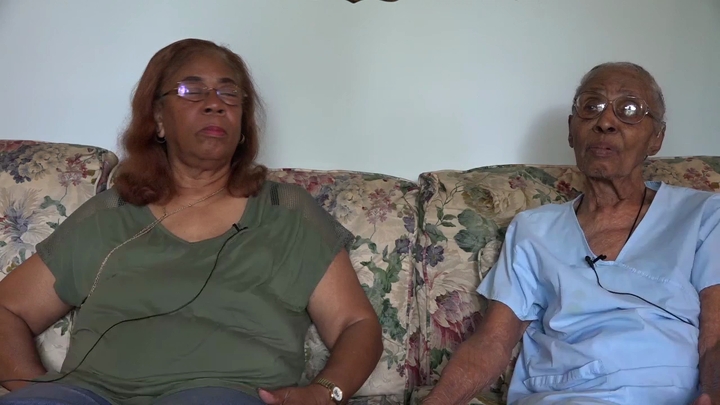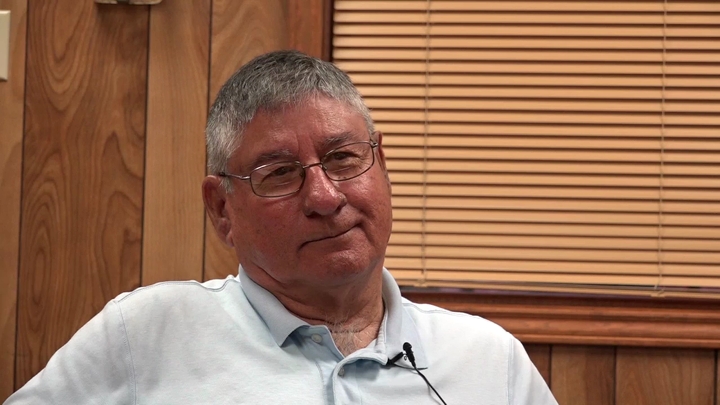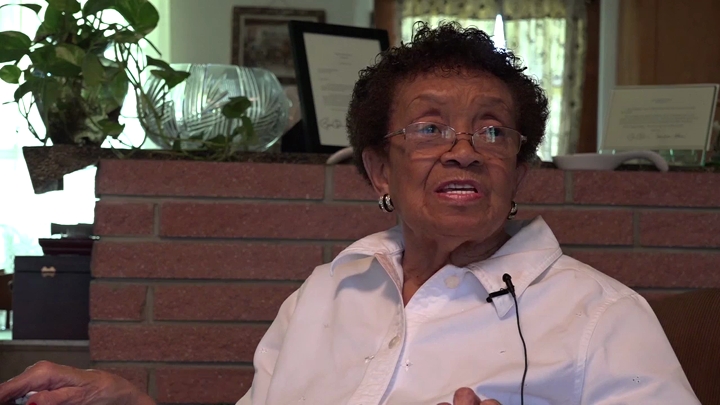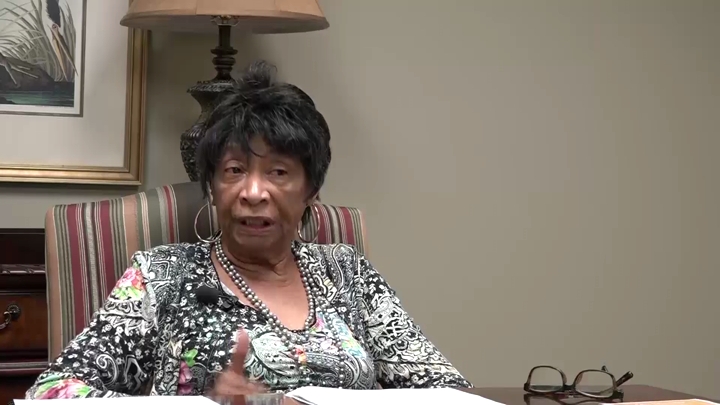Wilborn / First Interracial Contact
sign up or sign in to add/edit transcript
Interviewer: So, do you remember the first time meeting someone—like a Hispanic? Wilborn: Well, first time Hispanic was here in Marshall. Can’t say when. We always—didn’t have many. Not nearly as many as we have now. We’ve always had them here because we had the railroad tracks and they worked on the railroad also. We had about three or four thousand working for the railroad and the whites were supervisors. So, you had about three or four times more blacks working than you had whites. So, out of three or four thousand, you probably had about 65 percent blacks, maybe even 70. So, they made good money and they made, the people that worked at the railroad during that time, they got paid every two weeks because my friends daddy worked for the railroad. I was right there. He would always share with, his daddy. Treated me like a son. I was there. It was a treat every fifteenth, twenty-ninth payday. They were making seventy-five dollars a week, every two weeks. Where people out here at the dock, what I still call the dock, down the street here, they were only making forty dollars a month at that time. That’s discrepancies in the salaries. My stepfather working there, I made a mistake asked him why he didn’t work the railroad. He probably tried to get a job at the railroad. Boy, he gave me a chewing out. Never do that again. I can understand why. When you’re tired and you probably already done—somebody ask something you already tried to get a job and didn’t, because his brother at the shop but he didn’t. Everybody couldn’t get a job down there. Interviewer: Do you remember how many Hispanics had worked there? Wilborn: The railroad? I don’t have any idea. Interviewer: Just every now and again you’d see them working there. Wilborn: No, I couldn’t. During that time, see, I’m in high school. I’m trying to survive. Like I said, you try to stay out from around the whites. Matter of fact, during that time, blacks were 65 percent population. It was city of Marshall as well as the county. Sixty-five percent. Interviewer: What is it now? About 45? Wilborn: No. We about 38 percent black now, and I would say maybe 5 percent Hispanic. Maybe more than that, maybe 10 percent Hispanic. I know the school system was the black—they came out last year that it was 33 percent black, 33 percent Hispanic, and 33 percent white. So, the school’s majority minority.
| Interview | Interview with John Wilborn |
| Subjects | Family › Parenting |
| Work › Occupations | |
| Work › Discrimination at Work | |
| Race Relations › Black-White Race Relations | |
| Education › Secondary Education | |
| Quantitative Questions › First Interracial Contact | |
| Quantitative Questions › Black/Brown Relations | |
| Tags | sign up or sign in to add/edit tags |
| Interview date | 2015-06-23 |
| Interview source | CRBB Summer 2015 |
| Interviewees | Wilborn, John |
| Duration | 00:03:02 |
| Citation | "First Interracial Contact ," from John Wilborn oral history interview with , June 23, 2015, Marshall, TX , Civil Rights in Black and Brown Interview Database, https://crbb.tcu.edu/clips/1413/first-interracial-contact-2, accessed December 27, 2025 |
